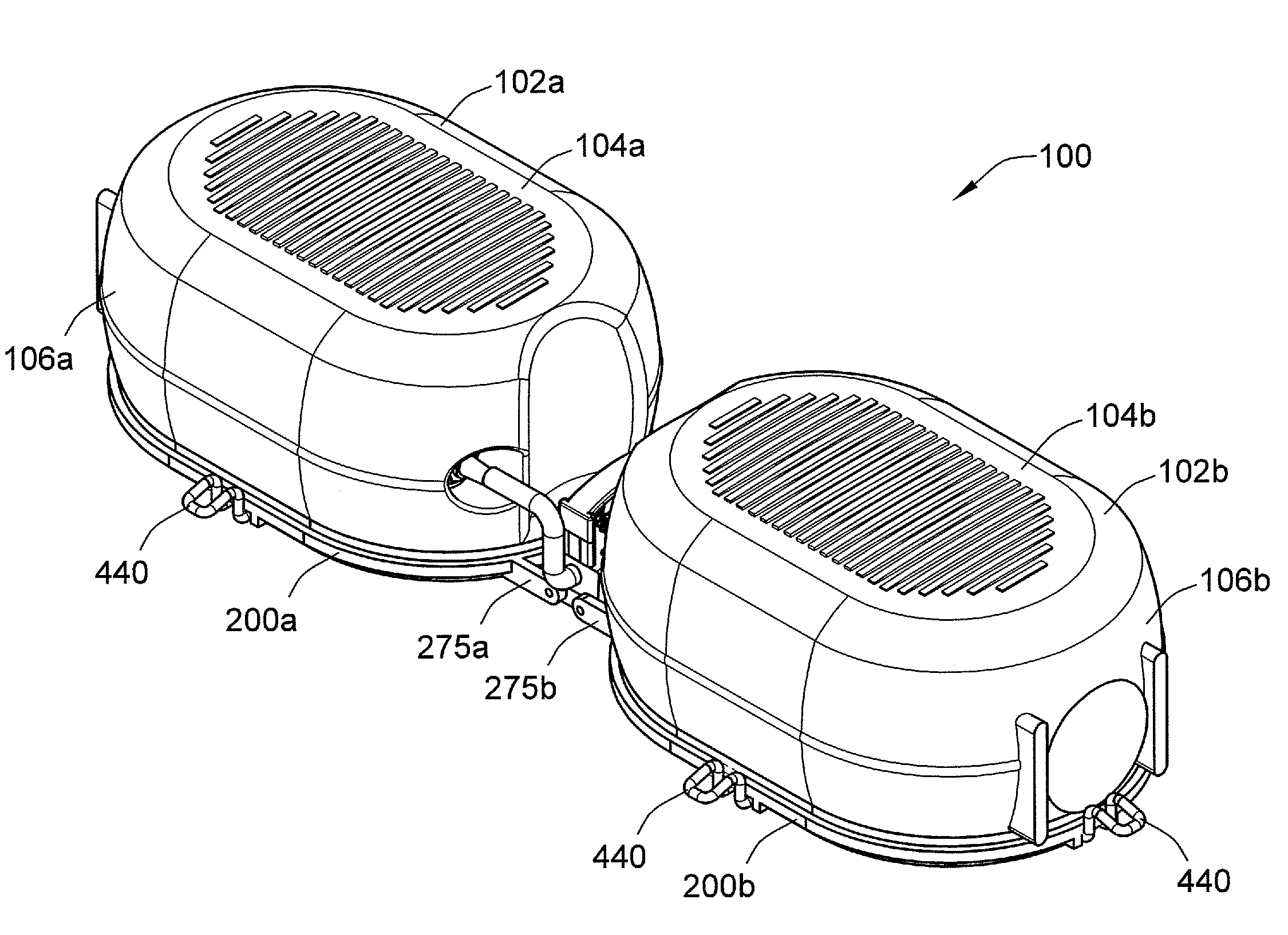[0009]According to certain embodiments, the inflatable exercise apparatus includes a valve control mechanism that may be used in controlling the flow of fluid, such as air, between the bladder segments. More specifically, the valve control mechanism may be used in regulating the
gas pressure in bladder segments. For example, when the valve control mechanism is at least partially opened, pressure exerted on a first bladder segment may force a fluid, such as air, through the fluid passageway and into a second bladder segment. The valve control mechanism may then be closed so that at least a portion of the air that has been communicated to the second bladder segment by pressing on the first bladder segment remains either in the second bladder segment or the portion of the fluid pathway that is adjacent to the second bladder segment. Alternatively, the valve mechanism may remain open during use, whereby the valve control mechanism, such as, for example, a
ball valve mechanism such as a clamp
ball valve, among other valves, is used to adjust the resistance provided by the bladder segment during use, and thereby allows the user to adjust the difficulty of the exercise session. According to certain embodiment, the valve control mechanism may be located on, in, or around the connecting fluid passageway between the bladder segments. The flow of fluid allows the apparatus of the present invention to be used in a dynamic or static fashion.
[0011]Adjustment of the amount of fluid in the bladder segments may also allow the apparatus of the present invention to be adjusted to accommodate the height of the individual user. More specifically, the height of the apparatus may be adjusted by adding or removing fluid from the bladder segments, which may allow for adjustment of the vertical height of the apparatus, and thereby permit adjustment in the height of the apparatus for the user.
[0014]According to some embodiments, at least a portion of the bottom of the base may be configured to increase friction between the base and the adjacent floor surface so as to assist in preventing the apparatus from sliding on the floor during use. According to other embodiments, a material, such as rubber pads or a flexible non-slidable ring of material, among others, may be attached to the base, such as by a mechanical
fastener or
adhesive, to prevent the base from sliding due to friction between the flexible material and the floor. According to certain embodiments, the bottom surface of the base may prevent the bladder segment from touching the floor.
[0015]Additionally, according to certain embodiments, at least a portion of the inflatable exercise apparatus may be pivoted or folded to accommodate a storage state. According to certain embodiments, a hinge is positioned between the bladder segments that allow the apparatus to be folded or closed, similar to a
clamshell. For example, according to an embodiment, the valve control mechanism may include pivotable hinges that allow the bladder segments to be pivoted around the valve control mechanism such that the bottoms of the bases beneath the bladder segments or the tops of the bladder segments are brought toward each other to provide for a compact storage state. Additionally, according to certain embodiments, the bladders and / or base may have appendages formed, attached, or otherwise connected to the bladders and / or base that enable the apparatus to stand in a generally upright position.
[0016]The upper surface of the bladder segments may be configured to include an apex with a
plateau that is configured to accommodate each user's varying stance dimension. For example, according to embodiments of the present invention, the bladder segment may have a generally oblong elliptical shape. Thus, the bladder segments of the
system can accommodate various stance dimensions of various users. Because of this flexibility each user can comfortably stand on the bladder segments without over stressing the lower leg structures, and thus keep the feet and ankles in a
neutral position. Also, the apex is designed with ridges that will collapse and secure the feet of various users to further secure their feet in neutral positions. These ridges help decrease probable foot and
ankle injuries while the device is in use.
[0017]According to certain embodiments, the apparatus of the present invention may also include one or more brackets for the attachment of additional
exercise equipment to the device, such as, for example, therabands and / or powercords. The inclusion of these additional exercise apparatuses may allow the user to perform multiple additional motions throughout an action, and enable the user to increase or decrease their level of difficulty in a quick and convenient manner as they see fit. The brackets may be attached to the base and / or bladder segment(s).
 Login to View More
Login to View More  Login to View More
Login to View More 


